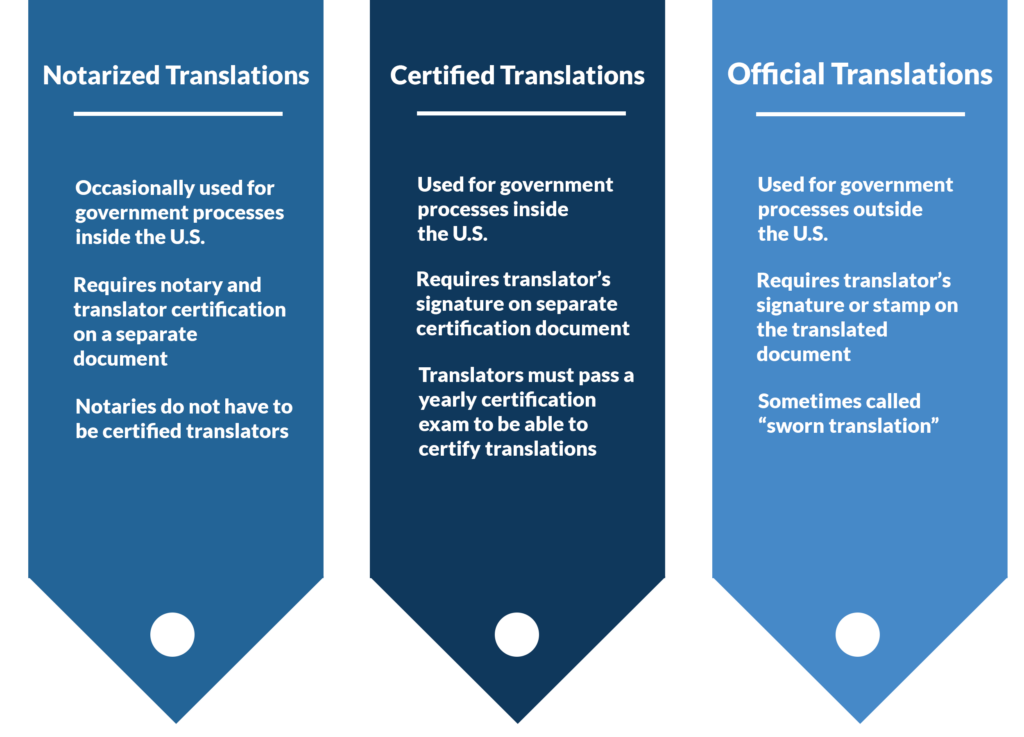The need for accurate and legally recognized translations has never been greater in today’s globalized world. Whether you’re applying for immigration, conducting international business, or dealing with legal matters across borders, you’ll likely need a notarized translation of your documents. But what exactly is a notarized translation, and how does it differ from other translation services? This article aims to demystify the concept of notarized translations, explain when and why you might need them, and guide you through the various aspects involved, including costs, certification, and the role of notary publics. Read on to find out everything you need to know about notarized translations.
Notarized Translation
A notarized translation is a specialized service that provides Translation and notarization of the translated documents. This process typically involves having the translated document verified and stamped by a notary public. This can be done online and offline through specialized notarized translation services.
Certified and notarized Translation are terms often used interchangeably, but they are different. So, what is the difference between a notarized translation and a certified translation? The difference lies in the level of verification. A certified translation is verified by the translator or translation agency, while a notary public verifies a notarized translation.

What Translation Documents Should be Notarized?
This question is probably one of the most asked. It will always depend on the purpose of the Translation. In instances involving legal or official matters, it is typically essential to have the translated documents notarized. Some documents that require notarization and Translation include immigration documents and birth certificates. These documents are essential for the legal procedures with USCIS (the U.S. Citizenship and Immigration Services).
How do you make a Notarized Translation?
Creating a notarized translation involves several steps, each requiring attention to detail and adherence to specific procedures. Here’s a general guide on how to go about it:

- Understand the Requirements: Before you start, understand what the requesting institution (a government agency, educational institution, or employer) specifically requires. Do they need the Translation to be certified, notarized, or both? Knowing this will guide the entire process.
- Choose a Qualified Translator: Select a translator qualified to translate your document. This usually means someone who is certified by a recognized translation association. Some institutions may have a list of approved translators, so it’s worth checking.
- Get the document Translated: Have a qualified translator translate the document. Make sure to review the Translation for any errors or omissions. The translator will usually attach a certificate of accuracy to the translated document, affirming that the Translation is complete and accurate.
- Prepare the Affidavit: An affidavit is a sworn statement confirming the accuracy of the Translation. The translator usually prepares this document, which will be attached to the Translation.
- Find a Notary Public: Locate a notary public who can notarize the document. This could be at a local bank, law office, or a dedicated notary service. Make sure to bring identification and any other required documents.
- The Notarization Process: During the notarization process, the notary public will verify the translator’s identity. The translator may be required to sign the affidavit in the notary’s presence. The notary will stamp and sign the affidavit, notarizing the Translation. Don’t forget to keep all pages together, as this now constitutes your notarized Translation.
- Submit the Notarized Translation: Submit the notarized Translation to the requesting institution. Keep copies for your records. Both the translation and notarization processes usually involve fees. So make sure these are paid in full to avoid any delays or issues.
- Confirm Receipt and Acceptance: After submission, confirm that the requesting institution has received and accepted the notarized Translation. Some institutions may require additional steps or verifications, so it’s good to confirm.
Can I Notarize my own Translation?
If you’ve translated a document and need it notarized, it’s best to find a qualified, impartial notary public to perform the notarization. This ensures that the process is carried out according to legal standards and that the document will be accepted by institutions that require notarized translations.
In some cases, you might find professionals who are both qualified translators and notaries. Still, they generally cannot notarize their own translations due to conflict of interest and impartiality rules.
It’s essential to check the specific requirements of the institution requesting the notarized Translation, as they may have specific guidelines on who is qualified to notarize a document. Some may require the notary to be registered in the same jurisdiction as the institution.
How Much Does it Cost to Translate a Legal Document?
Many online platforms offer a translation cost calculator to help you estimate the cost of your translation project. These calculators often include options for different types of services, including notarized translations. The cost can vary widely depending on the language pair, complexity, and whether notarization is required.
Translate and Notarize a Document Near Me
The requirements for notarized translations can vary by state, so it’s important to check the specific requirements for your jurisdiction. If you want to explore more about it, you can take a look at our related article: How to Translate and Notarize a Document Near Me.
A notarized translation offers a layer of verification that can be crucial for many vital transactions and applications. It’s not just about translating the words on a page; it’s about ensuring that the Translation is as accurate and trustworthy as possible.
When choosing a translation service, it’s advisable to read certified translation services reviews to ensure you’re getting the best service for your needs. If you’re looking for a streamlined and reliable way to get your documents translated and notarized near you, consider using Traduality’s project request feature to find vetted professionals who can handle all your translation needs. To get started, create your first project and find vetted translators, or book a meeting with us to learn more about your specific needs.
Updated 2/21/2024.





0 Comments